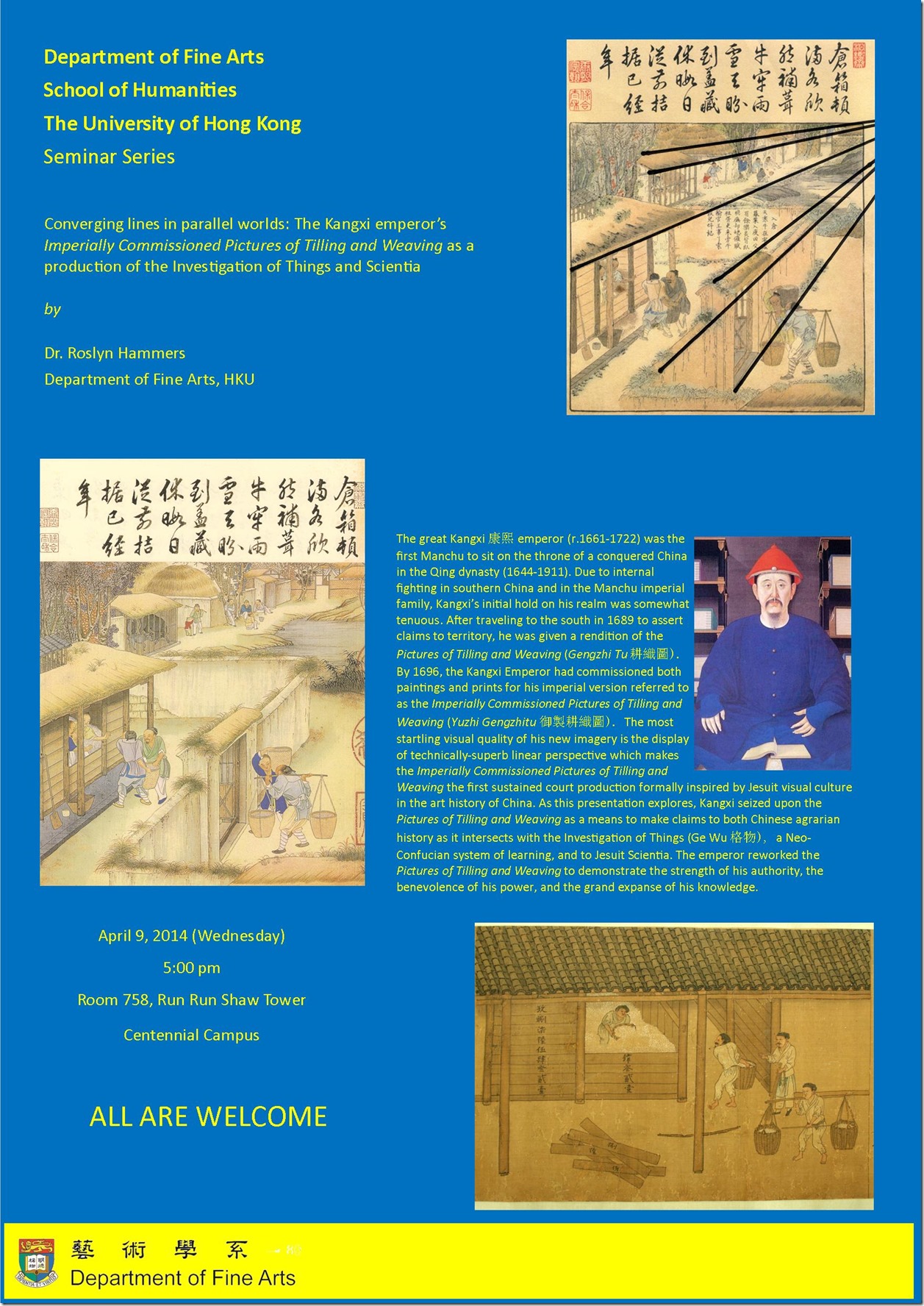

Converging Lines in Parallel Worlds
April 9, 2014 @ 5:00 pm - 6:30 pm
Converging Lines in Parallel Worlds: The Kangxi emperor’s Imperially Commissioned Pictures of Tilling and Weaving as a production of the Investigation of Things and Scientia
Date: 9 April 2014 (Wednesday)
Time: 5:00-6:30pm
Venue: Room 7.58, Run Run Shaw Tower, Centennial Campus
The great Kangxi 康熙 emperor (r. 1661-1722) was the first Manchu to sit on the throne of a conquered China in the Qing dynasty (1644-1911). Due to internal fighting in southern China and in the Manchu imperial family, Kangxi’s initial hold on his realm was somewhat tenuous. After traveling to the south in 1689 to assert claims to territory, he was given a rendition of Pictures of Tilling and Weaving (Gengzhi Tu 耕織圖). By 1696, the Kangxi Emperor had commissioned both paintings and prints for his imperial version referred to as the Imperially Commissioned Pictures of Tilling and Weaving (Yuzhi Gengzhitu 御製耕織圖). The most startling visual quality of his new imagery is the display of technically-superb linear perspective which makes the Imperially Commissioned Pictures of Tilling and Weaving the first sustained court production formally inspired by Jesuit visual culture in the art history of China. As this presentation explores, Kangxi seized upon the Pictures of Tilling and Weaving as a means to make claims to both Chinese agrarian history as it intersects with the Investigation of Things (Ge Wu 格物), a Neo-Confucian system of learning, and to Jesuit Scientia. The emperor reworked the Pictures of Tilling and Weaving to demonstrate the strength of his authority, the benevolence of his power, and the grand expanse of his knowledge.
Speaker: Roslyn Hammers
Dr. Hammers conducts research on the history of Chinese art and art theory. She is interested in the representations of labor and technologically-informed imagery. Her book Pictures of Tilling and Weaving: Art, Labor and Technology in Song and Yuan China (Hong Kong University Press, 2011) is a recipient of the College Art Association’s Millard Meiss prize. She is presently finishing a book-length manuscript on the Qing-dynasty Pictures of Tilling and Weaving and writing two articles, one on the acculturation of nature in Song-dynasty art and the other on the representations of cotton production in the Qing era.



Find us on…